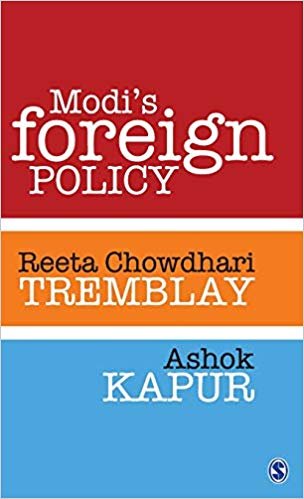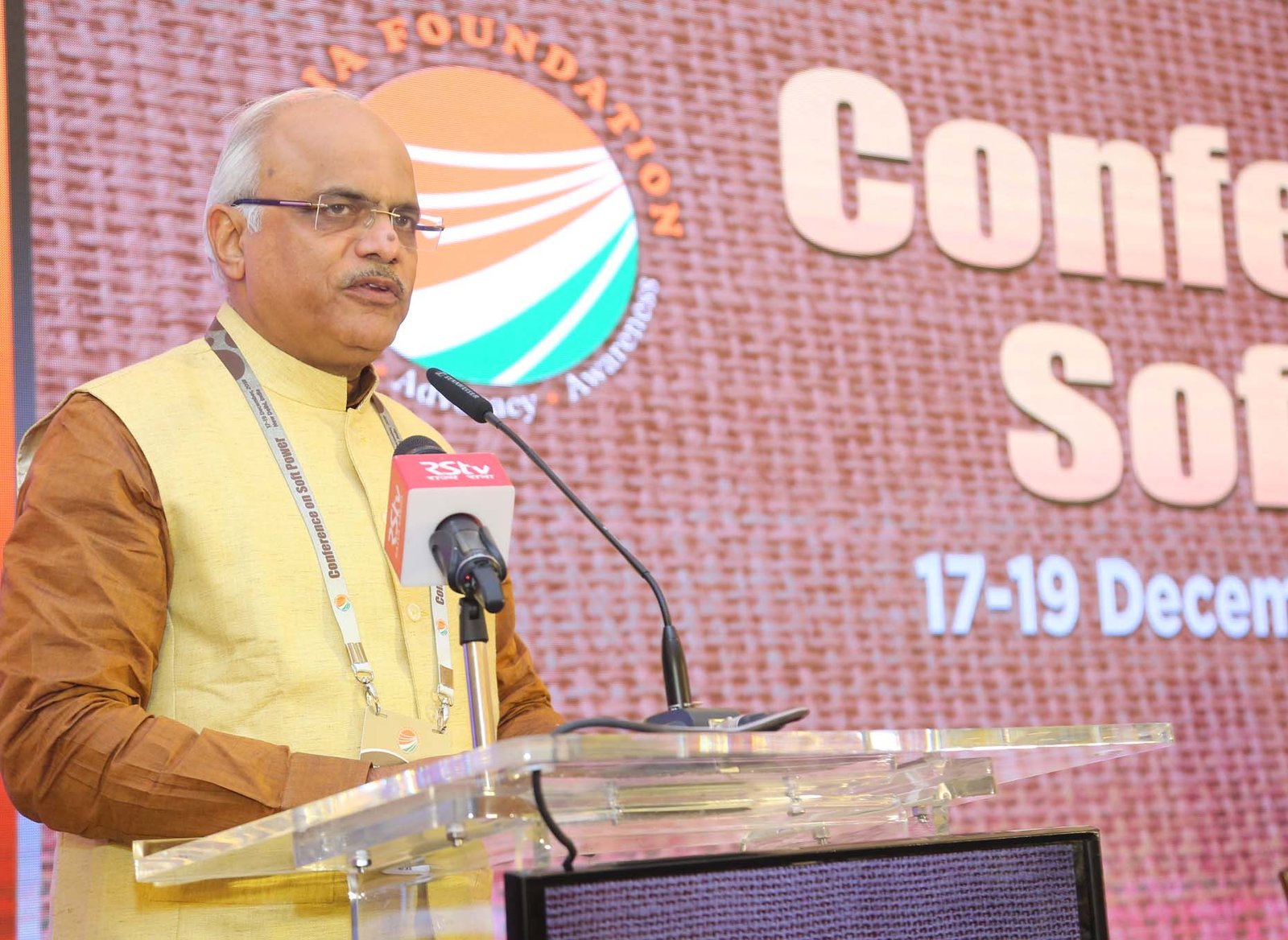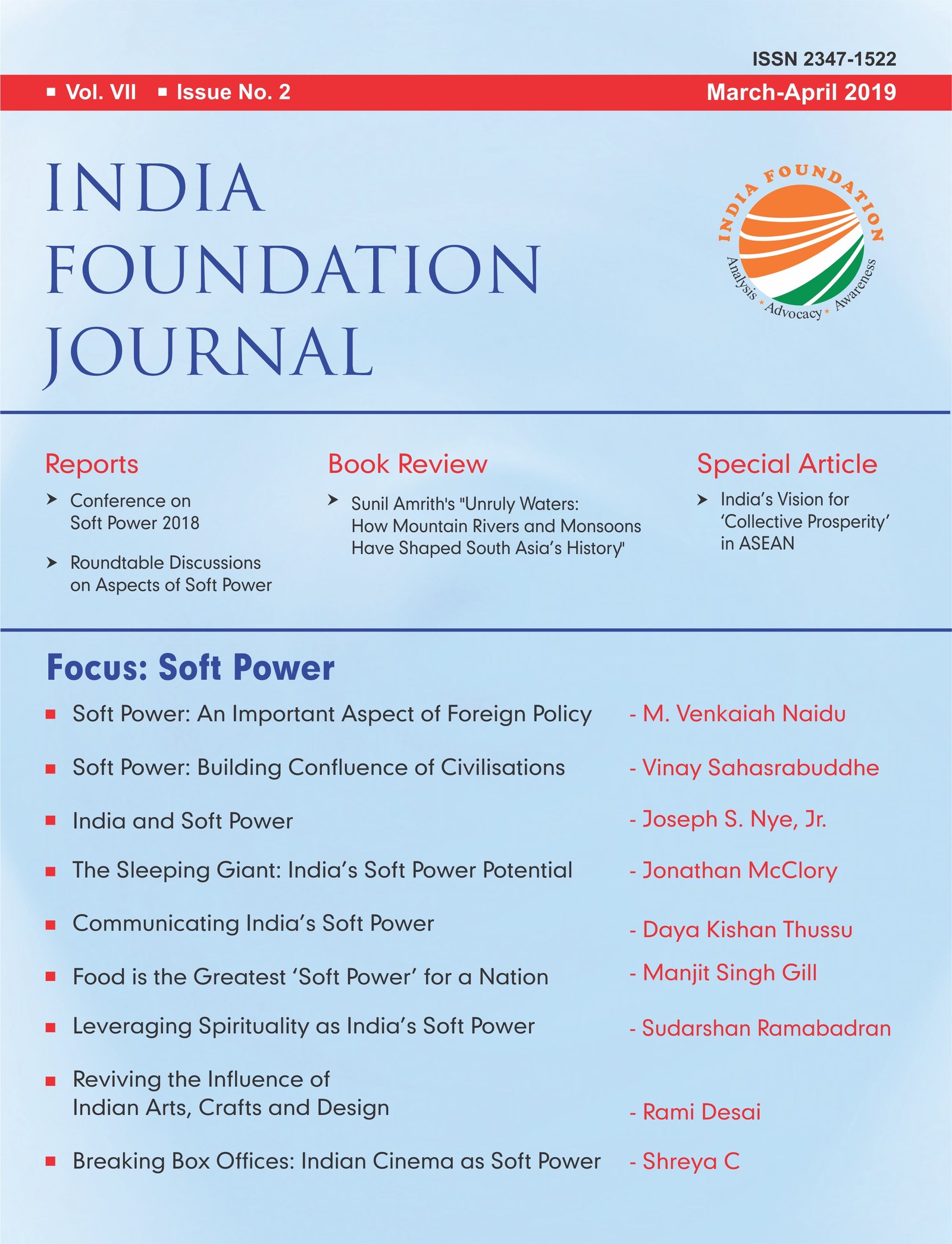As the proposal to designate Masood Azhar under the 1267 Al Qaeda Sanctions Committee of UNSC was halted by China once again, India found itself in a piquant position for the fourth time in a row. Even after repeated bids and diplomatic initiatives from India, China continued to insouciantly exploit its veto power as a Permanent Member of the United Nation’s Security Council. China’s intransigent stance against the national security interests of India, despite global pressure, has to be studied under the light of history, in how an infant democracy, but a gargantuan civilization cheated itself out of a better future.
Ghosts of 1955
What necessitates cognizance is the fact that in the year 1955 both the United States and the Soviet Union had initiated a dialogue with India expressing support for a permanent seat for it in the United Nations Security Council. On August 2, 1955, Prime Minister Nehru, in his fortnightly letters to Chief Ministers had unambiguously mentioned of an ‘informal offer made by the US for a UNSC seat for India’ which he had rejected.[i] The United States was not the only country to make this offer that year. On June 22, 1955, even the Soviet Prime Minister Nikolai Bulganin made an offer to Nehru in Moscow, proposing ‘India’s inclusion as the sixth member of the Security Council.’ Nehru had turned that down saying ‘We feel that this should not be done till the question of China’s admission and possibly of others is first solved. I feel that we should first concentrate on getting China admitted.’[ii]
However, the Indian Prime Minister deceitfully kept India’s parliament in the dark regarding this. In 1955, on September 27 when a short notice question was raised in the Lok Sabha by Dr J.N. Parekh on whether India had refused a seat informally offered to her in the Security Council, Nehru had replied ‘there has been no offer, formal or informal, of this kind. Some vague references have appeared in the press about it which have no foundation in fact. The composition of the Security Council is prescribed by the UN Charter, according to which certain specified nations have permanent seats. No change or addition can be made to this without an amendment of the Charter. There is, therefore, no question of a seat being offered and India declining it. Our declared policy is to support the admission of all nations qualified for UN membership.’[iii]
Five years before this incident, a 1950 correspondence between Nehru and his sister Vijaylakshmi Pandit who was serving as an ambassador in the United States, reveal that the US State Department was trying to unseat China as a Permanent Member of the Security Council to put India in her place. Nehru, trying to avoid any confrontation with China on this matter, expressed his disapproval. In the same letter he wrote, ‘We shall go on pressing for China’s admission in the UN and the Security Council.’[iv]
Nehru’s purported Realpolitik- Global Ambitions and National Interest
For more than five years the world superpowers had considered India as a deserving member of the world’s most powerful council. Especially Soviet Russia’s informal offer unlike the USA’s was to include India as the sixth member in the council, independent of China’s membership. Jawaharlal Nehru discreetly managed to keep these offers away from public knowledge and took a personal call that gratifying India’s increasingly belligerent neighbor China by sacrificing India’s seat in the UN was in national interest. Author and Hunter College professor of History, Manu Bhagavan spoke on Nehru’s international political ambitions ‘Nehru was unwilling to do anything that might alter or harm the United Nations, even when it would benefit India. Both the United States and Soviet Union approached Nehru in 1953 about a permanent seat on the United Nations Security Council, and he declined. Why did he decline? Basically, he feared that the UN was a delicate compromise. Any changes…might lead to a collapse, and he would not allow that to happen.’ He said Nehru’s idealistic foreign policy fell away in the 1960s due to external pressure when Nehru conceded in his own words that he was living in a ‘world of illusions’.
Professor Bhagavan went on to add that subsequently ‘the foreign policy goal of India during the 1980s was to get a seat on the UN Security Council, and in that, they have been a miserable failure.’[v] In retrospect, India had to pay a heavy price for the failure in promptly following up with these informal offers in the 50s. Ironically, international relations experts like Mohammed Ayub have called this Nehru’s realpolitik. [vi]
The other aspect of this ‘realpolitik’ by Nehru was his rebuffing of the astute warnings of foresighted men including Sardar Patel, Shyama Prasad Mukherjee, Acharya N G Ranga, and J B Kriplani, on China’s motives in the Indian neighborhood. B N Mullick, the Intelligence Chief of Nehru Government has written of Nehru’s knowledge of PLA’s incursion in the Aksai Chin area of India as long back as in 1952 itself. [vii] The Indian forces were not intimated to either contain or retaliate these incursions. The situation remained the same even a decade later when the sudden onslaught of Chinese forces began on the ill prepared Indian forces in October 1962.
Writers and analysts have pointed out the indelible mark this war left on the Indian psyche. Nobel Laureate, V S Naipaul in his book A wounded civilization wrote ‘1962 was the last year of post-Independence glory for the Indian Middle class until the Chinese war blew away the fantasy.’
A victory of the mind
It took more than 60 years for India to shift from this diffident political stance towards China to an assertive one. Similar to the 1950s incursions in Aksai Chin, in the garb of developing roads, Chinese troops in 2017 came over to the strategically important territory of Doklam in Bhutan. India was prepared this time and the political leadership had finally broken away from the mold of Nehruvian idealism. Indian troops mobilized unarmed in the disputed territory and contained the Chinese forces ‘by jostling, bumping chests, without punching or kicking,’ and carefully avoided any escalation[viii]. Meanwhile after prolonged diplomatic engagements between the nations, China along with India agreed to withdraw its troops from the face-off site in Doklam. The Washington Post reported ‘China was the first one to blink in this stand-off’ and had to retreat not only its troops but also its bulldozers and equipment for building the road. [ix] An article in The Diplomat claimed that this incident exposed China to ‘New Delhi’s resolve when its national security interests are involved to India’s self-conception as a great power in Asia. The standoff was an illustration that if China sought to put India in its place, so to speak, after the public opposition to its “Belt and Road” initiative, it would have to expand greater resources and expose itself to more risk.’[x] The New York Times wrote, ‘Few countries have been eager to confront China’s regional ambitions as directly with military forces, which has made India’s response to the construction so striking and, according to analysts from both countries, so fraught with danger. But in recent months, India’s leader, Prime Minister Narendra Modi, has shown that he is willing to flout China’s wishes — and ignore its threats.’[xi] With this episode, the diffidence in the attitude of our political leaders, a hangover of the 1962 loss, was finally shed.
A rock and a hard place
With the fourth blockade of India’s bids at the United Nations to list Masood Azhar, chief of Pakistan-based terror group Jaish-e-Mohammed (JeM) as a global terrorist, China has chosen to protect its interests in Pakistan. On one hand, as part of an infrastructure development plan inked with Pakistan in 2013, China has pledged $60 billion to build what’s known as the China-Pakistan Economic Corridor (CPEC)—a network of roads, pipelines, power plants, industrial parks, and a port along the Arabian sea.[xii] On the other, there have been talks of UN members escalating the veto issue to the highest level and presenting it before the Security Council for an open discussion and vote that would force the dissenters of Azhar’s designation to ‘publicly acknowledge their defense of terrorism.’[xiii]
Not losing sight of the silver lining, we must recognize that the proposal to designate Pakistani national, Azhar under the 1267 Al Qaida Sanctions Committee of the UNSC was moved by France, the UK and the US. Fourteen members of the UNSC supported listing the JeM leader while China’s was the lone negative vote. In this light, India’s campaign against Pakistan for sponsoring and supporting trans-border terrorist operations against India has largely been a success in the eyes of the western world.
The way forward
As the famous Henry Kissinger quote goes, ‘in international relations, there are no permanent friends or enemies, only interests’. In its attempts to safeguard its investments in the China Pakistan Economic Corridor (CPEC), China has been careful of not upending relations with Pakistan. This, China must recognize has come at the cost of risking tremendous political goodwill with India. Still on China’s standard transactional stance in such matters, Indian expert diplomat Gautam Bambawale had to say ‘perhaps China will permit the listing to move ahead if there is something India can do for them or offer them in return.’[xiv] India should be careful of its long term interests and maintain benign relations with its prodigious neighbor. Its foreign policy should continue its two-pronged approach, of securing tactical interests with China, and simultaneously investing in long term strategic strengthening of relations with countries in the region, especially countries like Vietnam and nations of the Arab world.
In this regards, the last five years have shown that India’s bold attitude is not only a high-decibel campaign but also an efficacious one. Learning from its mistakes in history, the country should now persist in staking its rightful claim in the world order. Under the likely next Modi government, India should complete its smooth handoff from high-morals to the high-tables.
(Ms. B. Shruti Rao is a Research Fellow at India Foundation.)
[i] Selected Works and Letters to Chief Ministers.
Harder, Anton. “Not at the Cost of China: India and the United Nations Security Council, 1950.” Wilson Center, 13 Mar. 2015, www.wilsoncenter.org/publication/not-the-cost-china-india-and-the-united-nations-security-council-1950#_ftnref4.
[ii] Noorani, “The Nehruvian Approach;” the quote comes from Selected Works of Jawaharlal Nehru, second series, vol. 19, Issue 02, Jan 19- Feb 01, 2002
[iii] The Hindu. “Jawaharlal Nehru on Permanent UNSC Membership: ‘No Question of a Seat Being Offered and India Declining It’.” The Hindu, The Hindu, 14 Mar. 2019, www.thehindu.com/news/national/jawaharlal-nehru-on-permanent-unsc-membership-no-question-of-a-seat-being-offered-and-india-declining-it/article26536197.ece.
[iv] Harder, Anton. “Not at the Cost of China: India and the United Nations Security Council, 1950.” Wilson Center, 13 Mar. 2015, www.wilsoncenter.org/publication/not-the-cost-china-india-and-the-united-nations-security-council-1950#_ftnref4.
[v] Story, Archived. “Professor Explains Gandhi, Nehru’s Political Ambitions at Lecture.” The Daily Campus, The Daily Campus, 11 Mar. 2016, dailycampus.com/stories/2016/3/11/professor-explains-gandhi-nehrus-political-ambitions-at-lecture.
[vi] Ayoob, Mohammed. “Nehru, China, and the Security Council Seat.” The Hindu, The Hindu, 17 Mar. 2019, www.thehindu.com/opinion/op-ed/nehru-china-and-the-security-council-seat/article26561751.ece.
[vii] B N Mullick, My years with Nehru, p. 196
[viii] Safi, Michael. “Chinese and Indian Troops Face off in Bhutan Border Dispute.” The Guardian, Guardian News and Media, 6 July 2017, www.theguardian.com/world/2017/jul/06/china-india-bhutan-standoff-disputed-territory.
[ix] Denyer, Simon, and Annie Gowen. “Who Blinked in the China-India Military Standoff?” The Washington Post, WP Company, 30 Aug. 2017, www.washingtonpost.com/news/worldviews/wp/2017/08/30/who-blinked-in-china-india-military-standoff/?utm_term=.9e0af1117ca4.
[x] Panda, Ankit. “What China Learned About India at Doklam.” The Diplomat, The Diplomat, 31 Aug. 2017, thediplomat.com/2017/08/what-china-learned-about-india-at-doklam/.
[xi] Myers, Steven Lee, et al. “How India and China Have Come to the Brink Over a Remote Mountain Pass.” The New York Times, The New York Times, 26 July 2017, www.nytimes.com/2017/07/26/world/asia/dolam-plateau-china-india-bhutan.html.
[xii] Toppa, Sabrina. “Why Young Pakistanis Are Learning Chinese.” The Atlantic, Atlantic Media Company, 14 Nov. 2018, www.theatlantic.com/international/archive/2018/11/pakistan-china-cooperation-cpec/568750/.
[xiii] Raj, Yashwant. “UN Members Warn of ‘Other Actions’ as China Blocks Bid to List Masood Azhar as Global Terrorist.” Https://Www.hindustantimes.com/, Hindustan Times, 14 Mar. 2019, www.hindustantimes.com/world-news/un-members-warn-of-other-actions-as-china-blocks-bid-to-list-masood-azhar-as-global-terrorist/story-nnZUOuhWyKRasls9zZDoxL.html.
[xiv] India Legal. “Masood Azhar: A Convenient Pawn.” India Legal, 25 Mar. 2019, www.indialegallive.com/world-news/global-trends-news/masood-azhar-a-convenient-pawn-62260.





